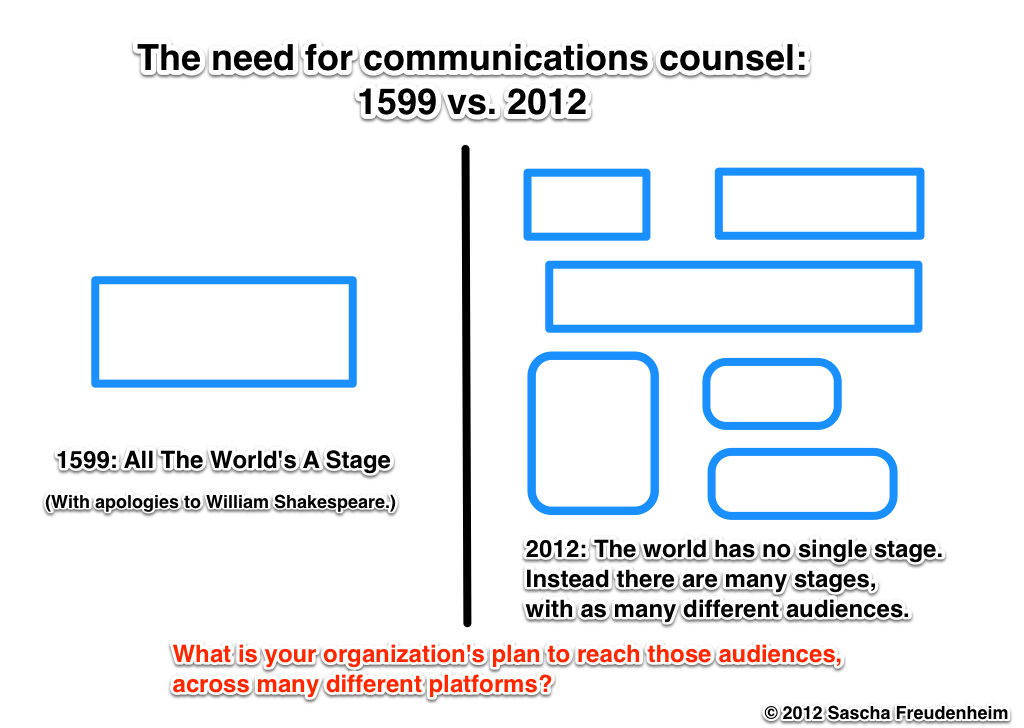A few days ago, in a piece about politics in Israel, Daniel Gordis mentioned a reframing of “left” and right” that he’d heard at a conference: rather than those traditional designations, the speaker preferred to think of people as either “prophets” or “guardians.” Since reading that, I keep thinking about the applicability of these same terms to the working world, too. The distinction seems clear enough: prophets reflect a vision for the future, a response to changing dynamics that draw on core values but adapt them to new and more challenging circumstances, where guardians are people who recognize that the value in the status quo and fight to protect it against whimsical change or uncertain times.
As a consultant, this situation comes up more than occasionally, and assessing the relative weight of the prophets versus the guardians can be a rough guide to the future. When organizations are confronted with challenges or the need for change, the reactions that are provoked are often very similar. Some people respond like (or turn into) prophets; others become guardians. I think this genuinely reflects people’s responses to (potential) disruptions in either their internal or external working environments, no less in the world of arts and culture than in any other area–and sometimes more so, because the motivations for change in a non-profit are very different from those in a for-profit.
Understanding that people may respond this way can help leaders navigate through the necessary interpersonal and practical decision-making processes. Guardians can be helped to understand that not all change is bad–and that most organizations change over time, even if they don’t recognize it as such. Prophets can be encouraged to frame their views in ways that connect past and future; they can be helped to turn their vision of an inevitable future into a process that feels controlled and controllable.
At the same time, the world is rarely so black-and-white; few of us are ever 100% of anything, let alone 100% “prophet” or 100% “guardian.” We may embrace change or fear it, and sometimes we do both in equal measure. That is the most difficult place to be, because it can so easily lead to stagnation. But for most businesses and organizations it may also be the best hope–if both those leading and those being led can understand that they are in this dynamic together. This is the point when the good ideas and opportunities can be separated from the bad, using the critical judgments of those leaning in one direction or the other. It does not necessarily mean absolute consensus, but it can mean general agreement that helps an organization’s leaders to lead.
The worst situation? Whether an organization is mostly guardians or mostly prophets, the real threats come from the barbarians: those who function that way internally, or those who are outside the organization and viewed as such. The internal barbarians are the ones who may run roughshod over both the good and the bad ideas, forcing “change” but not evolution. They form alliances that fight for the status quo, but only for the status quo that applies to them. If you perceive barbarians externally, well, your problem is likely also internal. Those people are your audiences–your customers–so if you view them as barbarians, then you need to ask yourself whether you are doing enough to help these folks understand your mission and your goals.
Are there legitimate barbarians outside your gate? Probably a few. But they may be clamoring for a past they vaguely recall, or for a future they cannot articulate. Your goal is to embrace and convert them. An organization that cannot adapt to embrace its customers–and instead views them as a threat–is doomed to fail. No embrace of the future or protection of the sacred past will change that.




